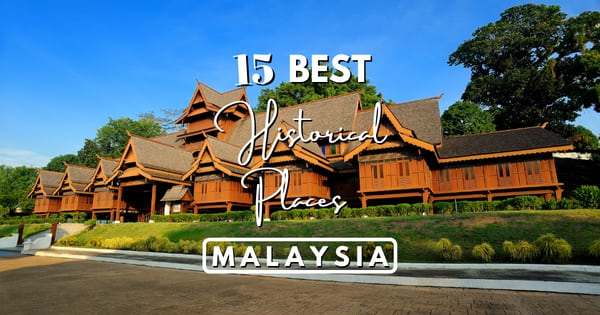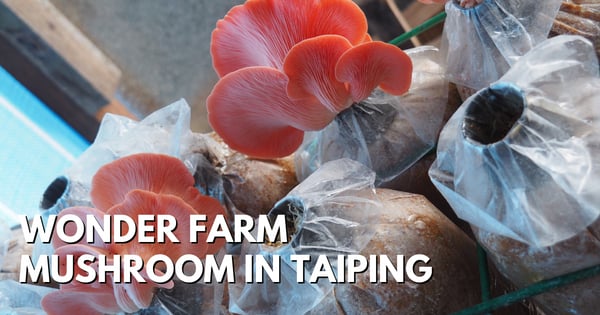Did you know that there are many historical places in Malaysia? Many are now iconic landmarks of independence.
The British and Dutch occupation left behind many historical relics. And with the multicultural population, there are many places of worship too.
Read on and discover these heritage-rich places in Malaysia.
1. Kellie’s Castle
In the Kinta District in Perak: Kellie’s Castle is an unfinished mansion built by William Kellie-Smith as a gift to his wife or son.
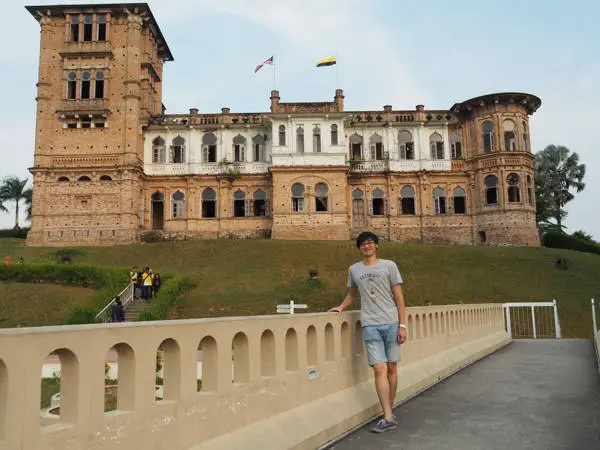
At the young age of 20 years old, William purchased 1,000 acres of jungle land. He invested in rubber tree plantations as well as in the tin mining industry.
With his fortune, he built his first mansion known as Kellas House, part of which is still on site at Kellie’s Castle.
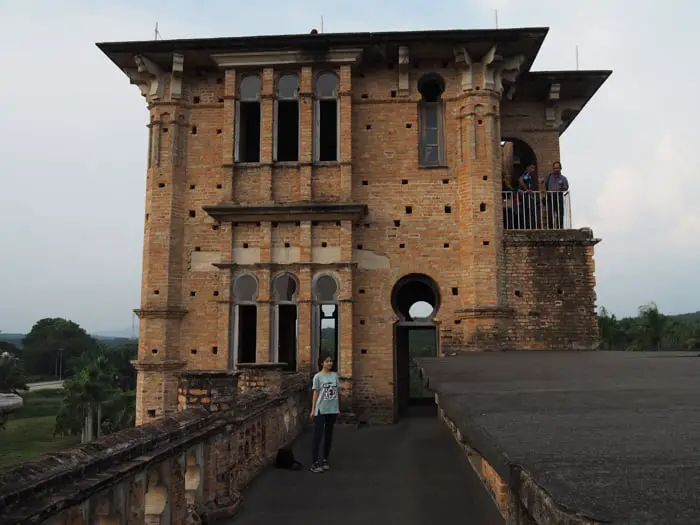
But before completing the larger Kellie’s Castle:
William Kellie-Smith passed away at 56 due to pneumonia during a trip to Lisbon.
Devastated by her husband’s death, William’s wife moved back to Scotland. And so, the construction of the castle was never completed.
Today, Kellie’s Castle is a popular tourist attraction that many believe has ghosts. It was also used as a shooting location for the movie, Anna and the King.
Read more on Kellie’s Castle in Perak.
2. TT5 Tin Dredge
While you’re in Ipoh, swing by the TT5 Tin Dredge located at Batu Gajah. This hidden gem is often bypassed for Ipoh’s culinary allure.
But it is actually the last remaining tin dredge in Perak (and Malaysia).
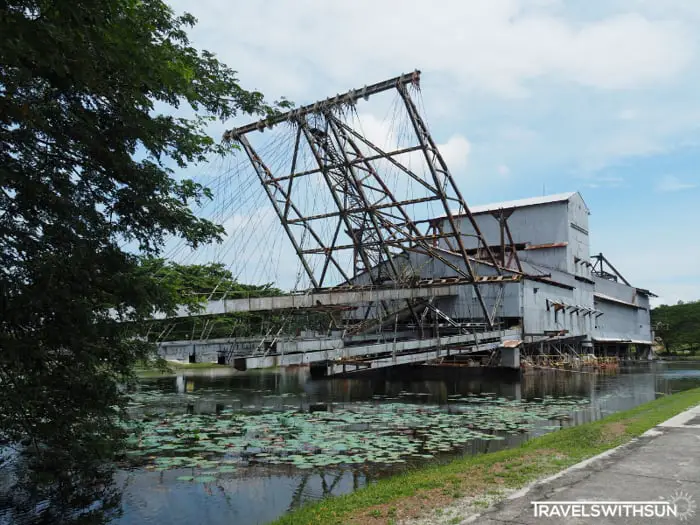
Boasting a majestic stature and weighing in at a whopping 4,500 tons:
A floating dock measuring 75 meters in length and 35 meters in width supports the tin dredge.
The TT5 Tin Dredge was built in 1938 in England by a leading dredge engineering company called F.W. Payne & Son.
TT5’s glory days lasted 44 years until the world’s tin price started tumbling in 1982.
Operation of the dredge came to a halt. Due to the scarcity of tin deposits, high operating costs, and water leakage.
Recognizing its historical significance, the government put in RM8.5million. To renovate and preserve the dredge.
These days, you can take guided tours to see the TT5 Tin Dredge up close. Visitors will get to dabble in panning too.
To further draw in the crowd, there is another new attraction – the biggest maze park in Malaysia.
See some more photos of the maze park and other attractions at TT5 Tin Dredge.
3. A’Famosa Fortress
A Famosa which means “The Famous” in Portuguese. It is one of the oldest remnants of European architecture still standing in Asia.
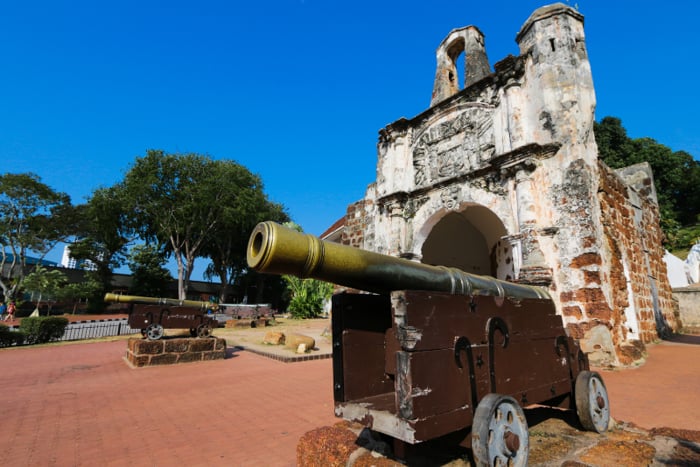
The fortress once had 4 major towers and a long, connective architecture. But now, only a tiny gate from that time remains!
It all began in 1511 when a Portuguese fleet under Alfonso de Albuquerque arrived in Melaka.
Upon defeating the Sultanate’s armies, Alfonso built the fortress. Choosing a natural hill close to the sea for the site.
He envisioned Melaka to serve as an important port linking Portugal to China for the spice trade.
Villages sprouted within the fortress walls. The population soon outgrew the original fort. So several extensions were built in 1586.
The fort changed hands in the early 19th century. This was after the Dutch defeated the Portuguese. And the Dutch later handed over the fortress to the British.
The English planned to move the population and demolish the fort. It almost happened if not for Sir Stanford Raffles (the founder of Singapore). He persuaded the English to let the residents remain.
And he convinced the English to let one gate remain for history’s sake.
So if you go today, the remnants of A Famosa are at the base of St Paul Hill. There are a few canons, the Santiago Bastion, and an old Portuguese church up the hill.
Moreover, a short hike at the back of the hill will reward you with a panoramic view overlooking Melaka town.
4. Malacca Sultanate Palace
At the foot of St Paul Hill and not far away from the A Famosa:
The Malacca Sultanate Palace is a replica of the original structure built by Sultan Mansur Shah.
The Sultanate was the ruler of the city before the Portuguese arrived in the 1500s.
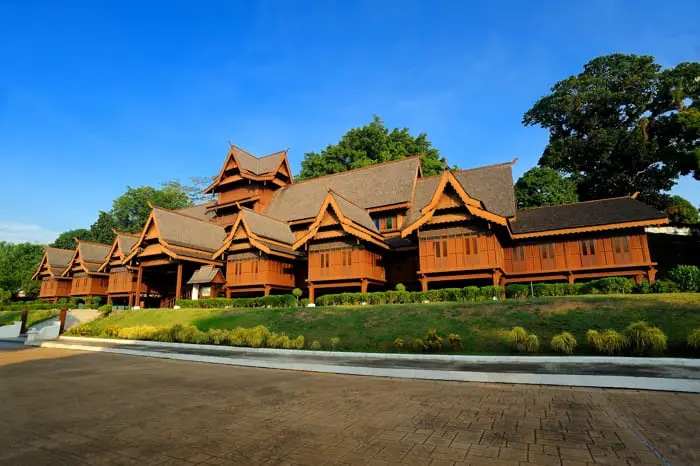
A visit to the Malacca Sultanate Palace offers a historical glimpse of the ancient Malay kingdom during its glory days.
The palace plays host to the Cultural Museum which highlights the contribution of Malays to Malacca’s history.
There are more than 1,300 items of Malacca’s historical past on display. Including photographs, drawings, weaponry, musical instruments, and gifts from foreign ambassadors too.
While you’re here, stop by the St Paul’s Church located on top of St Paul’s Hill. And on your hike up, check out the Architecture Museum Malacca and the Stamp Museum Malacca.
If there’s time, make another pit stop at the Islamic Museum of Malacca. So you can learn how Islam came to Malacca and advanced throughout the country.
5. Christ Church Malacca
Flaunting a Dutch Colonial architectural style:
Christ Church in Malacca is the oldest functioning Protestant church in Malaysia.
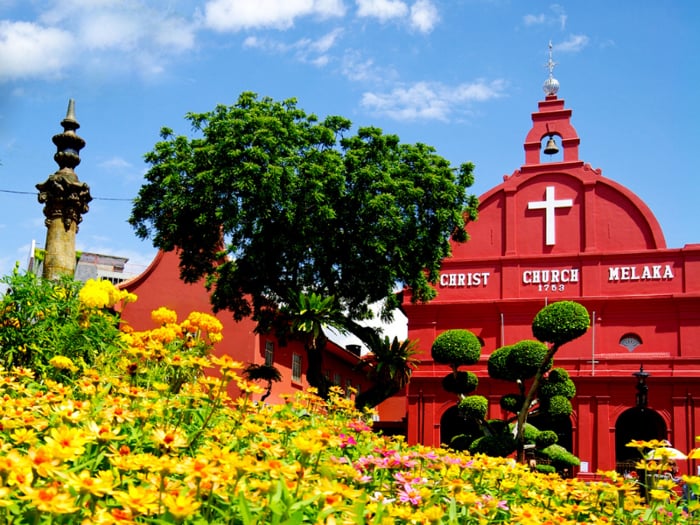
In fact, there are regular services in English and Chinese between 8.30am and 10.30am every Sunday.
Christ Church is very recognizable. It has a distinct brick-red color and a huge white cross and bell at the top. And inside, a tranquil ambiance reverberates throughout its interior.
Built by the Dutch when they conquered Malacca from the Portuguese:
The construction of this church was a historical feat that took over 12 years with no expense spared!
It is an architectural heritage to marvel at. From the wooden ceiling beams to the intricate hand-carved frieze and pews of “The Last Suppers”.
6. St Paul’s Church, Malacca
Perched at the top of St Paul’s hill is St Paul’s Church, the oldest church in Malaysia.
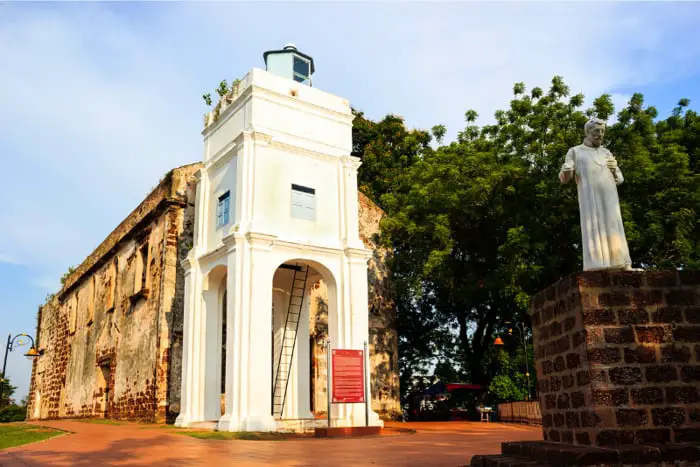
A 2-minutes walk from A Famosa:
This ancient church no longer serves as a place of worship. But it’s a bustling tourist attraction over the weekends.
Built by the Portuguese in 1521, St Paul’s church was first inaugurated for Roman Catholics. And was later used to store gunpowder during the British occupation.
Brief funeral rights were conducted for missionary St. Francis Xavier here too. While his remains were sent to Goa in India 3 weeks later.
There is an open grave that marks the spot where he was buried. Alongside several tombstones within the compound.
You’ll also find a statue of St Xavier and an old lighthouse located in front of the church.
7. Kampung Kling Mosque
See a blend of architectural styles like Sumatran, Chinese, Hindi, and Melaka Malay styles at the Kampung Kiling mosque.

Originally built with wood by Indian Muslim traders in 1748, it was reconstructed in 1872 using bricks.
This traditional mosque in Melaka defies the conventional structure of mosques in Malaysia. It has a refreshing aesthetic twist that makes it stand out:
Instead of the expected spherical dome, there is a triple-tiered green pyramidal roof.
A combination of east-meets-west is evident in the pagoda-style structure that forms its minaret. Alongside some Moorish elements.
Furthermore, the mosque’s interior has Portuguese and English influence. There are glazed tiles, Corinthian columns, arches, etc. Together with a mix of Hindu, Chinese, and Malay ornamental elements.
8. Cheng Hoon Teng Temple
Recognized by UNESCO for its outstanding architectural restoration:
The Cheng Hoon Teng Temple is the oldest functioning temple in Malaysia.
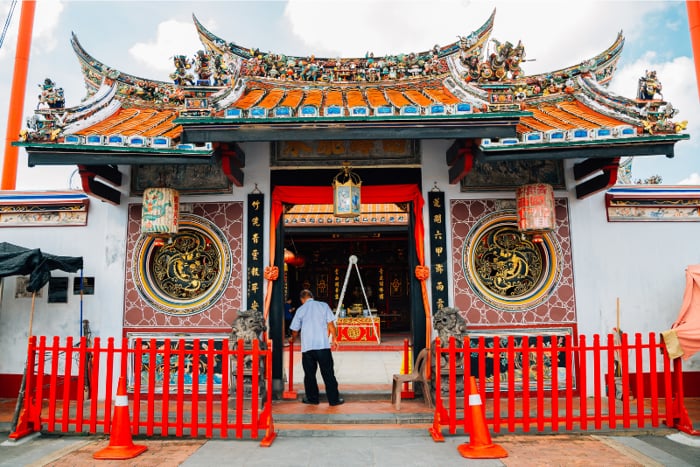
Built in the 1640s, the elaborate decoration includes gorgeous ceramic sculptures on the roof. As well as detailed carved woodwork, golden paintings, and Chinese sculptures.
A tranquil rock garden takes center stage at the back of the temple. Where there are many limestone sculptures of Taoists, Buddhists, and Confucius. All encircling the Goddess of Mercy.
Thus, the rock garden is a favorite hangout and scenic photo opportunity for tourists.
9. St George Church
Hailed as the first and oldest Anglican church in Southeast Asia:
St George Church was built in the 19th century by the British.
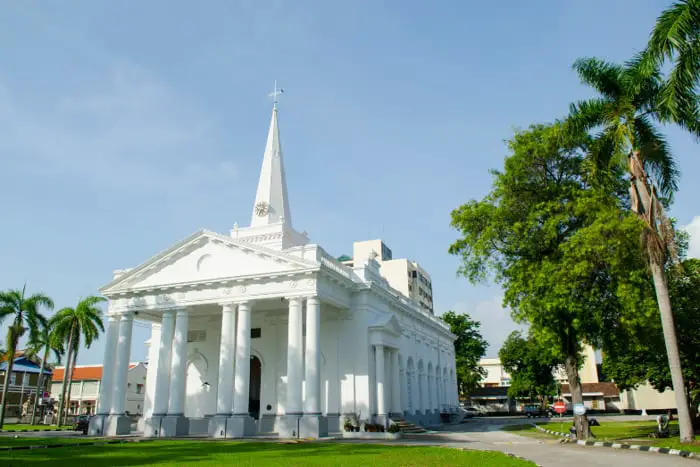
The architectural plans were by the Governor of Prince of Wales Island (i.e. Penang), William Petrie.
The church combines distinct Neo- Classical, Georgian and English Palladian styles. It is built entirely by a battalion of Indian convict labor.
In 2007, the Malaysian government declared the church as one of the 50 National Treasures of Malaysia. And it underwent a major restoration in 2009.
Visitors to Penang will see that St George Church remains well-maintained. It’s majestic and a popular spot for bridal photography.
10. Goddess Of Mercy (Kuan Yin) Temple
One of the oldest Chinese temples in Penang:
The Goddess of Mercy temple is an elaborate Taoist temple. It is dedicated to the Goddess of Mercy, Guanyin, and a bodhisattva.
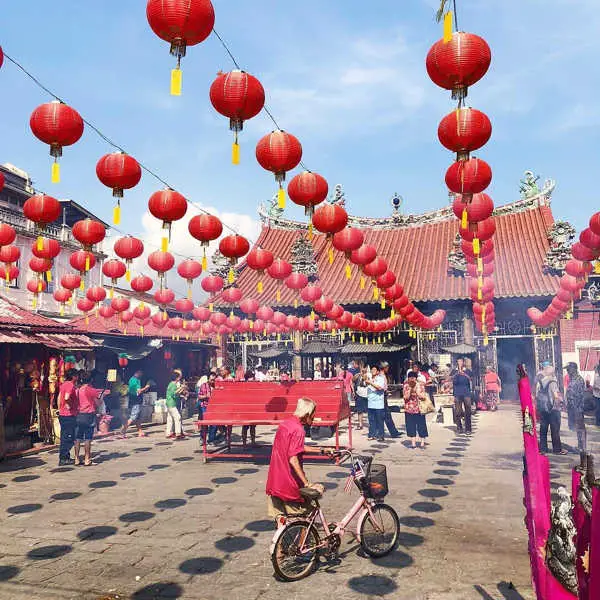
An overpowering scent of burning sandalwood incense greets you as you enter. There are usually many devotees offering prayers daily.
Built in 1728 by the Cantonese and Hokkien community:
The temple sees worshippers seeking blessings for a better year ahead. Devotees may also seek protection or calm. Away from unwanted spirits and troubled times.
Despite the perpetual crowd, a sense of peace abounds as you set foot in the temple.
And besides visiting for religious purposes:
The Goddess of Mercy Temple in Penang is an opportunity for photographers. It has a myriad of textures and paintings.
If that appeals to you, make a brief stop here while you’re in Penang!
11. Penang Snake Temple
The famous Penang Snake Template was built in 1805 to honor a Buddhist Monk, Master Qing Shui. He was well-known for his healing capabilities.
The other purpose of the temple is to provide shelter to snakes.

Legend has it that when the temple was completed in 1800, snakes filled the premise. Without any human intervention.
A heady scent of burning incense fills the temple, alongside a variety of pit vipers. The slithery creatures are on the altar and in the garden at the back nearby the washroom too.
Due to the sacred smoke, it is believed that the vipers are harmless. Still, as a precaution, the snakes are also de-venomed while leaving their fangs intact.
Guests are also forbidden from touching the snakes. Except for the two huge pythons trained for this purpose.
There’s a breeding area amongst lush ciku trees that are teeming with many snakes too.
Penang Snake Temple was once featured in the Amazing Race (Season 16). Further increasing its popularity.
12. Fort Cornwallis
Fort Cornwallis is the largest and oldest fort to grace Penang and Malaysia.
Fort Cornwallis was built by the British to protect Penang Island.
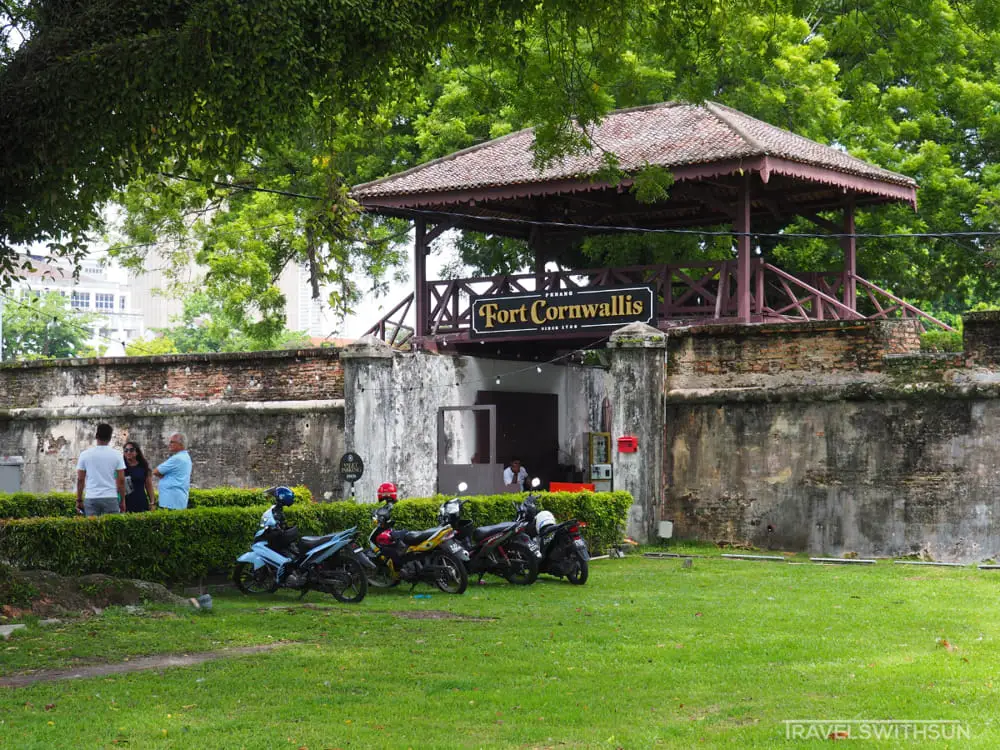
You can take advantage of the panoramic vantage from the fort. It overlooks the clock tower and nearby cruise ships.
This landmark in George Town has a statue of the founder of Penang Island, Captain Francis Light.
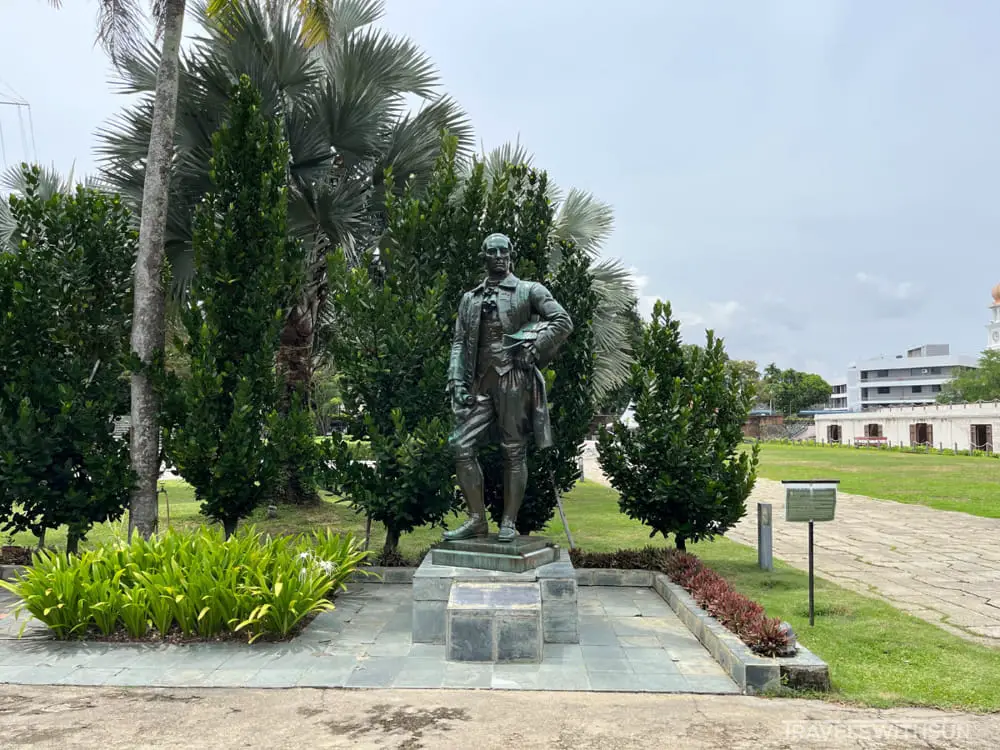
The statue commemorates the spot where Captain Francis Light first landed in 1786.
Note: There are interesting facts displayed around the fort about Sir Francis Light
Yet, Fort Cornwallis was named in honor of Charles Marquis Cornwallis, the then Governor-General of Bengal.
Later, the Duke of Wellington reported that Fort Cornwallis was unsuitable for defending Penang.
The idea of relocating the fort was scrapped due to its exorbitant cost. Fort Cornwallis was rebuilt between 1804 and 1810.
Of the 77 cannons installed along Fort Cornwallis, only 17 remain today:
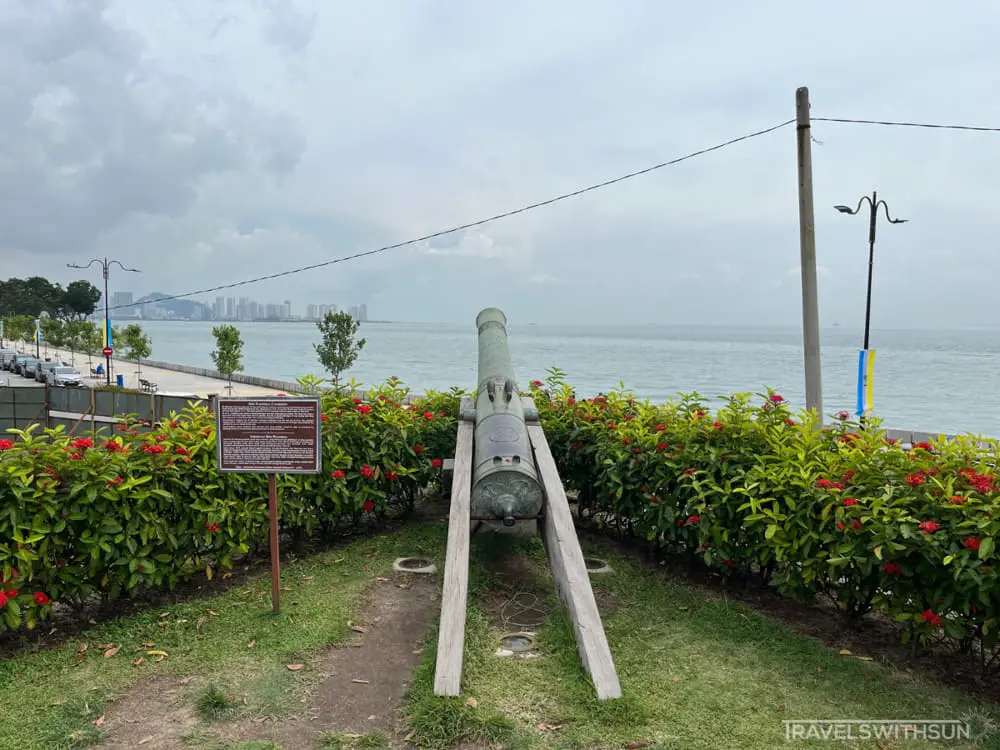
The most famous one is the Seri Rambai cannon moved from Johor to Java, then Acheh and Kuala Selangor. In 1871, the canon was seized by the British and placed at the north-western corner of Fort Cornwallis.
Read more about Fort Cornwallis in Penang island.
13. Batu Caves
Captivating from afar with 272 multi-colored steps:
Batu Caves is a sacred pilgrimage for Hindus in Malaysia.
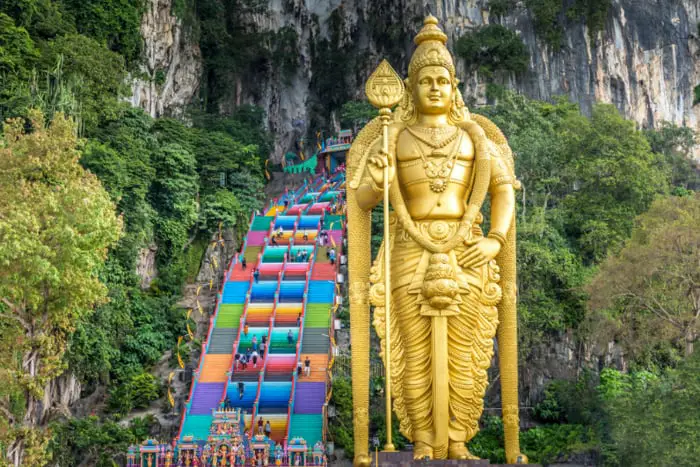
Within a complex limestone cave, the name Batu Caves comes from its proximity to the Batu River.
And it was William Temple Hornaday, an American naturalist who discovered the cave.
K. Thamboosamy Pillay who is a leader within the Tamil Hindu community in Malaya built the temple in 1891.
The highlight of the temple is the majestic gold-painted statue of God Murugan. It stands at the base of the steps and measures 140 feet tall.
Batu Cave comprises several sections. The largest is the Temple Cave. Followed by the Dark Cave which is usually closed to the public.
Inside Batu Caves, there are dioramas depicting scenes from the epic poem Ramayana.
To explore more paintings and statues, venture into the Cave Villa. This houses the Art Gallery Cave and Museum Cave.
14. Dataran Merdeka
While Merdeka Square may seem nothing more than a vast field with an immaculate green lawn:
It has the tallest flagpole in the world (at 95m). Andthere’s no denying its historical significance.
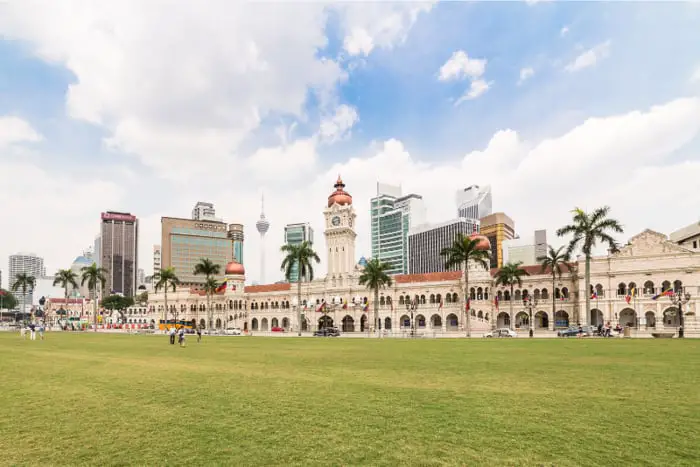
Dataran Merdeka is where the Malayan flag took over the British Union Flag at midnight on 31 August 1957. Representing Malaysia’s independence from British occupation.
Since then, Merdeka Square has been the venue for many Independence Day parades.
While you’re here, don’t miss the Victorian-era fountain near the flagpole.
The square is opposite the Sultan Abdul Samad Building. And it is beside the Royal Selangor Club.
Go shutter crazy and capture the spectacular views of the KL skyline. From here, you can see iconic buildings like the Twin Towers, KL Tower, and the new Merdeka 118 in the backdrop.
15. Sri Mahamariamman Temple
Built in1873 by K. Thamboosamy Pillai:
The Sri Mahamariamman Temple is the oldest and richest Hindu temple In Kuala Lumpur.
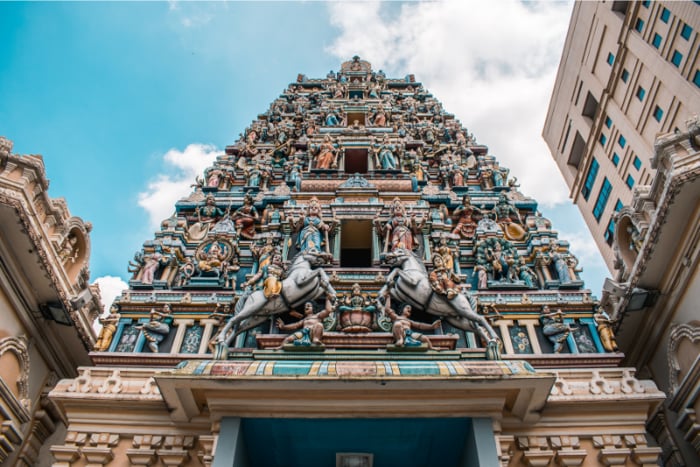
During its early years, it served as a private shrine for the Pillai family.
In the 1920s, the family opened the temple doors to the public. And gave the temple management over to a board of trustees.
While its initial structure was modest and made of attap:
The original structure was demolished in 1887 to make way for the current design.
Today, there is an arresting 5-tiered tower (or gopuram). This is the building’s signature feature.
At a dramatic height of 75ft, the pyramid-shaped gate tower has sculptures of Hindu gods. These were crafted by artisans from Southern India.
Within the temple premises is a silver chariot for the annual Thaipusam festival. The chariot transports the statues of Lord Muruga along with his consorts in Batu Caves.
Making its debut in 1993, the highlight of the chariot is its stature. The chariot is a whopping 6.5 meters tall with 240 bells, led by a pair of horses.
Conclusion
Malaysia is a treasure trove of historical places! Especially with Penang and Melaka as Unesco World Heritage Sites.
Not forgetting Malaysia’s melting pot of cultures.
Go on a blast to the past and visit these historical sites with this list. Many of these (Ipoh, Penang, and Malacca) are havens for Malaysian traditional food too.
Further reading:
- Top Places To Visit In Ipoh
- Top Places To Visit In Penang
- Top Places To Visit In Langkawi
- Top Places To Visit In Cameron Highlands

